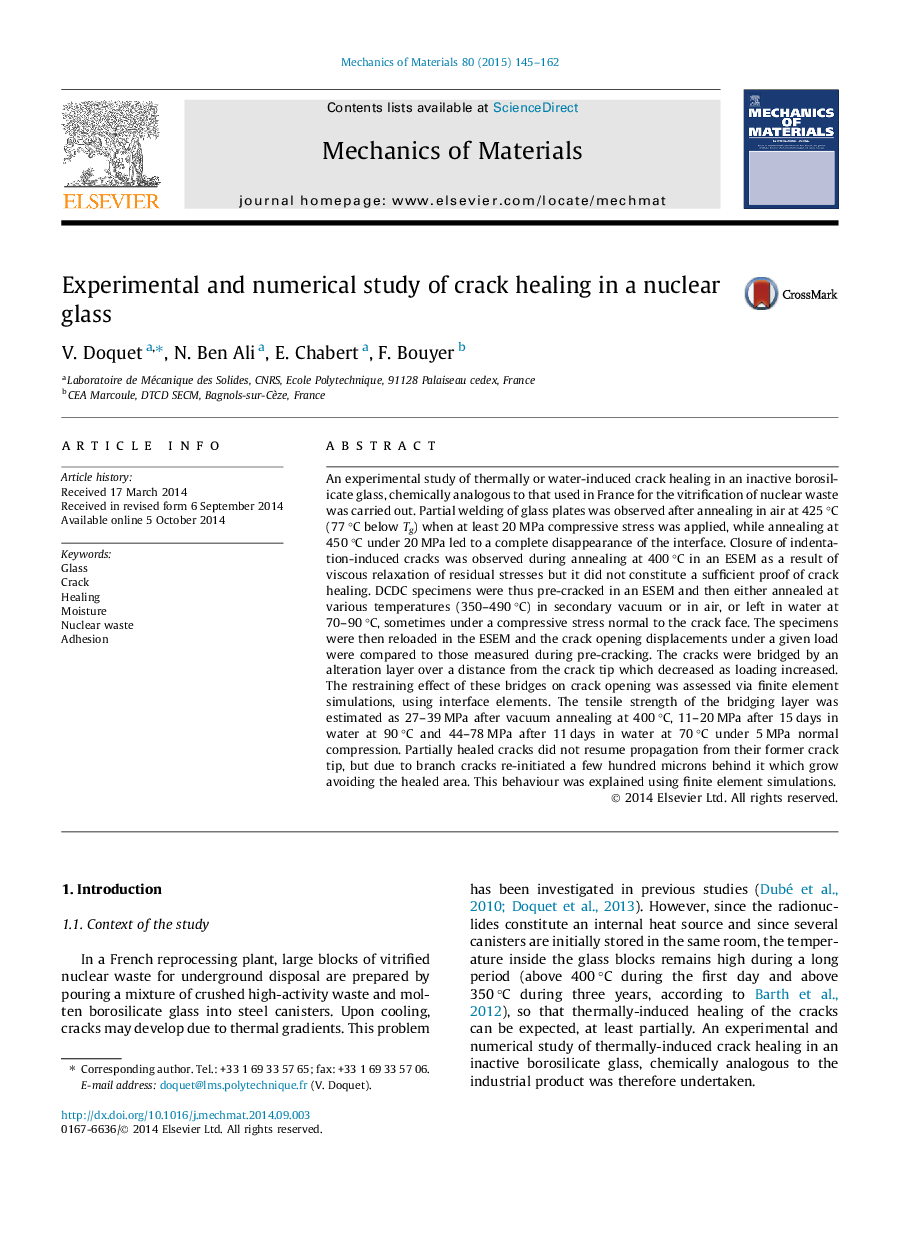| کد مقاله | کد نشریه | سال انتشار | مقاله انگلیسی | نسخه تمام متن |
|---|---|---|---|---|
| 799691 | 1467461 | 2015 | 18 صفحه PDF | دانلود رایگان |
• Thermally or water induced crack healing in nuclear glass DCDC specimens were investigated.
• Crack opening displacement profiles were measured in a SEM before/after annealing.
• Healing was favoured by higher annealing temperatures and compressive normal stresses.
• Compliant bridges formed between the crack face were modelled as interface elements.
• Cracks also healed partially after 11 to 15 days in water at 70 to 90 °C especially with a normal compression.
An experimental study of thermally or water-induced crack healing in an inactive borosilicate glass, chemically analogous to that used in France for the vitrification of nuclear waste was carried out. Partial welding of glass plates was observed after annealing in air at 425 °C (77 °C below Tg) when at least 20 MPa compressive stress was applied, while annealing at 450 °C under 20 MPa led to a complete disappearance of the interface. Closure of indentation-induced cracks was observed during annealing at 400 °C in an ESEM as a result of viscous relaxation of residual stresses but it did not constitute a sufficient proof of crack healing. DCDC specimens were thus pre-cracked in an ESEM and then either annealed at various temperatures (350–490 °C) in secondary vacuum or in air, or left in water at 70–90 °C, sometimes under a compressive stress normal to the crack face. The specimens were then reloaded in the ESEM and the crack opening displacements under a given load were compared to those measured during pre-cracking. The cracks were bridged by an alteration layer over a distance from the crack tip which decreased as loading increased. The restraining effect of these bridges on crack opening was assessed via finite element simulations, using interface elements. The tensile strength of the bridging layer was estimated as 27–39 MPa after vacuum annealing at 400 °C, 11–20 MPa after 15 days in water at 90 °C and 44–78 MPa after 11 days in water at 70 °C under 5 MPa normal compression. Partially healed cracks did not resume propagation from their former crack tip, but due to branch cracks re-initiated a few hundred microns behind it which grow avoiding the healed area. This behaviour was explained using finite element simulations.
Journal: Mechanics of Materials - Volume 80, Part A, January 2015, Pages 145–162
